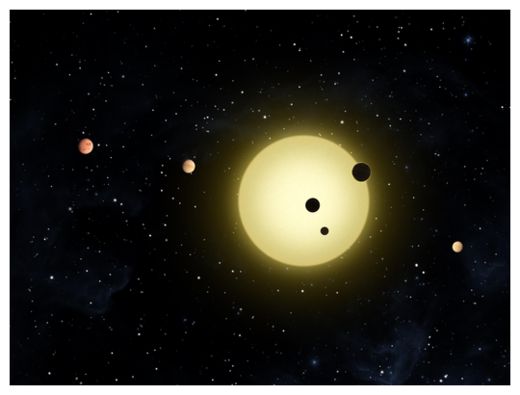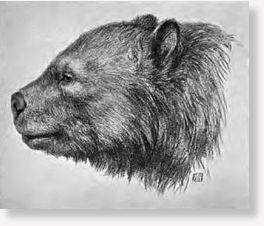
© NASA/Tim PyleKepler-11 is a sun-like star around which six planets orbit. At times, two or more planets pass in front of the star at once, as shown in this artist's conception of a simultaneous transit of three planets observed by NASA's Kepler spacecraft on Aug. 26, 2010.
Scientists using NASA's Kepler, a space telescope, recently discovered six planets made of a mix of rock and gases orbiting a single sun-like star, known as Kepler-11, which is located approximately 2,000 light years from Earth.
"The Kepler-11 planetary system is amazing," said Jack Lissauer, a planetary scientist and a Kepler science team member at NASA's Ames Research Center, Moffett Field, Calif. "It's amazingly compact, it's amazingly flat, there's an amazingly large number of big planets orbiting close to their star - we didn't know such systems could even exist."
In other words, Kepler-11 has the fullest, most compact planetary system yet discovered beyond our own.
"Few stars are known to have more than one transiting planet, and is the first known star to have more than three," said Lissauer. "So we know that systems like this are not common. There's certainly far fewer than one percent of stars that have systems like Kepler-11. But whether it's one in a thousand, one in ten thousand or one in a million, that we don't know, because we only have observed one of them."
All of the planets orbiting Kepler-11, a yellow dwarf star, are larger than Earth, with the largest ones being comparable in size to Uranus and Neptune. The innermost planet, Kepler-11b, is ten times closer to its star than Earth is to the sun. Moving outwards, the other planets are Kepler-11c, Kepler-11d, Kepler-11e, Kepler-11f, and the outermost planet, Kepler-11g, which is twice as close to its star than Earth is to the sun.
"The five inner planets are all closer to their star than any planet is to our sun and the sixth planet is still fairly close," said Lissauer.



Comment: Whereas this article barely touches the gaps and holes in the evolutionary theory, it does raise the issue that species - including human beings - may acquire genetic material from other species other than their own. For more information on this topic, don't miss our next issue of the Dot Connector Magazine where Laura Knight-Jadczyk shares her latest research in the special feature "The Golden Age, Psychopathy and the Sixth Extinction."